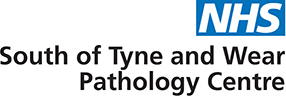C3 & C4
Code:
COMP
Sample Type:
Serum (Gold Top)
Minimum volume: 1 mL
Ref Ranges/Units:
C3: 0.9 – 1.8 g/L
C4: 0.1 – 0.4 g/L
Turnaround:
Same Day
Stability:
C3:
4 days at 20‑25°C
8 days at 4‑8°C
8 days at −20 °C
C4:
2 days at 20‑25°C
8 days at 4‑8°C
3 months at −20°C
Special Precautions/Comments:
Additional Information:
The complement cascade can be activated by the classical and alternative pathways. These two pathways converge to a joint terminal pathway. C3 and C4 are substrates of the complement cascade and are acute phase proteins which increase in inflammation before being consumed by the complement pathway. Therefore, decreased levels of C3 and/or C4 indicate activation of complement.
C3 is common to both the classical and alternative pathway, whereas C4 forms part of the classical route only. Therefore, measurement of C3 and C4 can determine which complement pathway has been activated.
C3 can be decreased in inflammatory conditions such as systemic lupus erythematosus (SLE), rheumatoid arthritis, subacute bacterial endocarditis and bacterial sepsis. C3 can also be decreased in patients with partial lipodystrophy or membranoproliferative glomerulonephritis when C3-nephritis factor is present. C4 can be decreased in SLE, autoimmune thyroiditis, juvenile dermatomyositis, bacterial sepsis and bacterial and viral meningitis.


